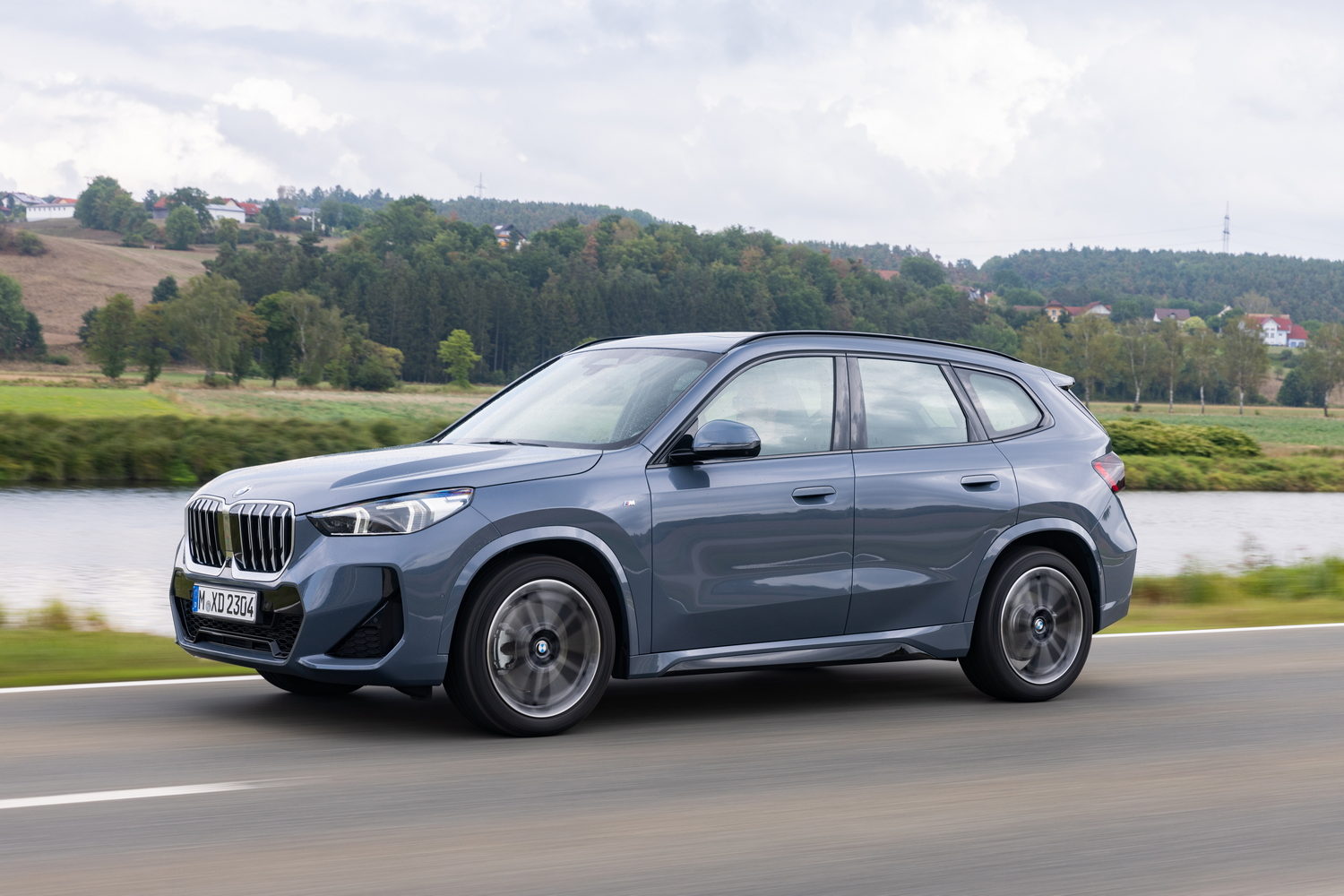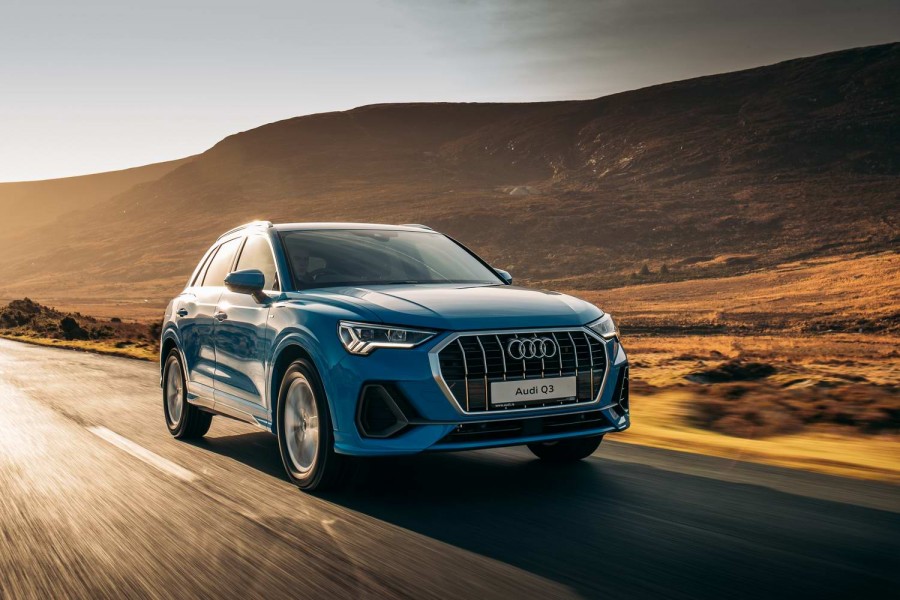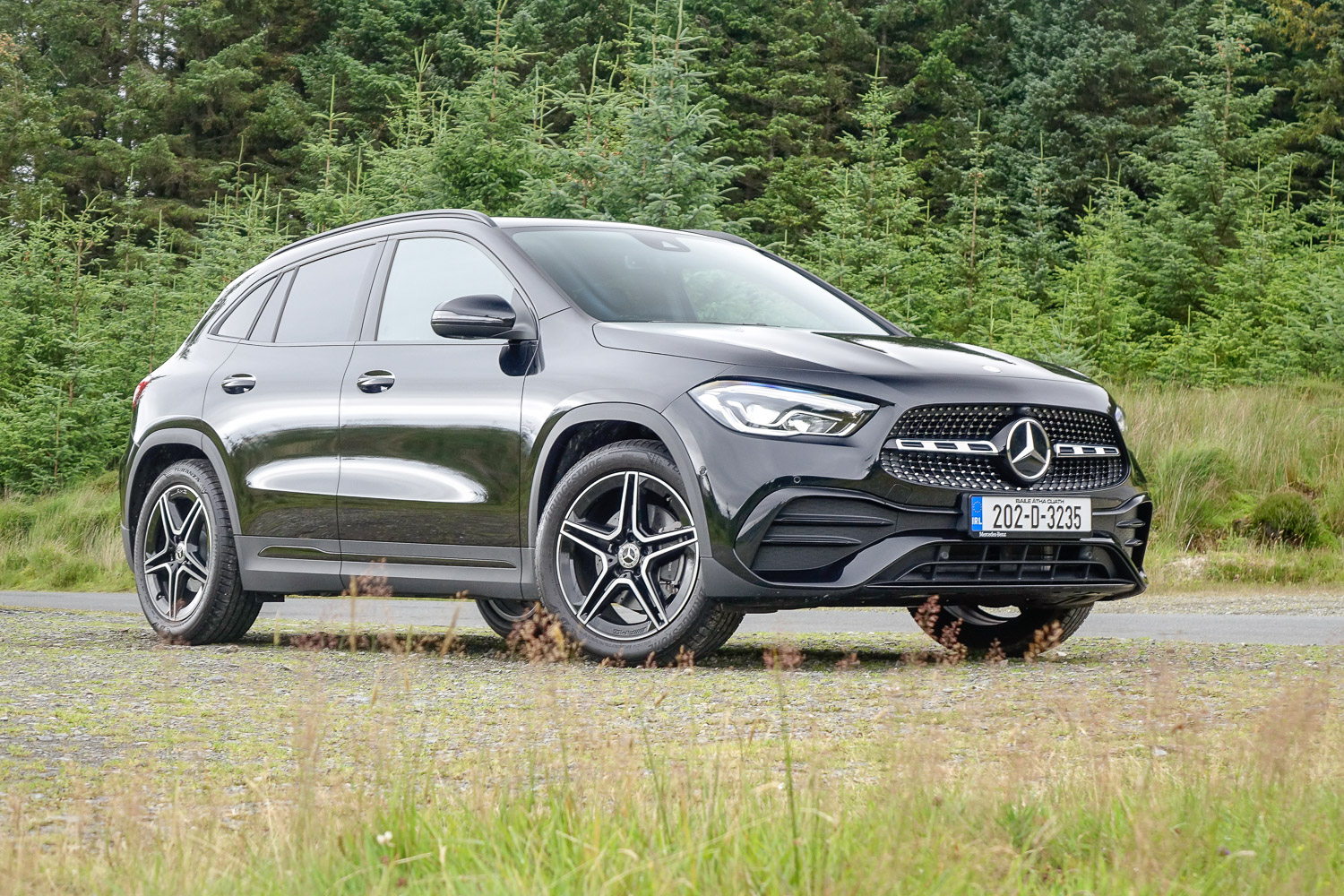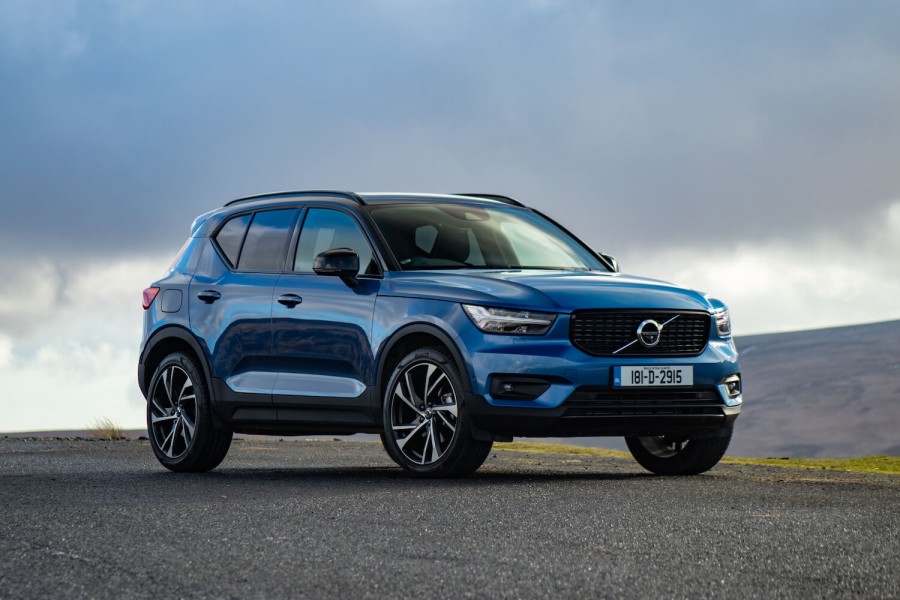There's quite a lot of pressure on the new BMW X1. The nameplate has been with us for well over a decade now, and it has been a big hit with consumers. In fact, it's one of BMW's most popular models. Which means the new model has big boots to fill, but BMW will be hoping a modern new look and fresh technology, as well as extra space and a wide range of powertrains, will be enough to keep the X1 at the top of its class.
In the metal
BMW was more or less given a blank sheet on which to design the X1, although the car does share quite a lot with the 2 Series Active Tourer MPV. That's evident in the similarly shaped front grille, which is admittedly smaller than some may have feared, and the headlights, which have the same narrow design. However, BMW has designed the X1 to be aerodynamic, believe it or not, so you get shutters that open and close depending on the airflow needs of the engine and fins at the back to tidy up the air spilling from the car's rear end. In all, the styling is quite clean and modern, although the chunky look won't appeal to everyone - perhaps including those drawn in by the curves of the current Mercedes-Benz GLA.
Inside, the 2 Series Active Tourer's influence is even more apparent, with the cabin design seemingly drawn up using a piece of tracing paper. The entire dashboard is identical to that of the Active Tourer, right down to the curved, two-screen infotainment display across the driver's side of the car and the floating centre console that houses the toggle-style drive selector.
The new infotainment system is quite the upgrade, switching from the old iDrive rotary controller to full touch sensitivity and taking on some new responsibilities at the same time. With the advent of this new system, BMW has done away with climate control buttons, preferring to move the controls to the touchscreen display. Normally, such a move would stick in our craws, but fortunately the new screen is so sharp and so quick to respond that it isn't a great issue. And it helps that BMW has left the basic temperature up/down controls accessible at all times.
But while the new touchscreen is good, it isn't quite as good as the digital instrument cluster, which is crystal clear and really easy to read - especially in comparison with some of BMW's previous efforts. The screen can also be configured easily, allowing drivers to view the information they want to see in a style that suits them.
While the touchscreen and instrument display grab all the attention, it's easy to miss the X1's build quality, which is every bit as good as you'd hope. Perhaps it isn't as solid as an Audi Q3, but it's better built than a Mercedes GLA and every material, every button and every moving part feels absolutely first-rate.
That's a good thing, because although it's unquestionably premium, the X1 can still work as a family car. The back seats offer more than enough space for adults, let alone children, and the boot is massive. Basic X1s have 540 litres of luggage space, which is almost as much as you get in the larger BMW X3, and while all-wheel-drive, mild-hybrid models have less space - around 500 litres - and the iX1's boot is even smaller, at 490 litres, every model will happily swallow everything from the weekly shop to holiday luggage.
Driving it
The new X1 is available with a wide range of powertrains, ranging from 1.5-litre petrol engines to 2.0-litre diesels and from clever plug-in hybrids to the all-electric iX1. However, they all have one thing in common: they're the best cars in their respective classes.
That's partly because the X1 is a great car to drive in any guise you care to mention. From the most basic front-wheel-drive diesel to the electric iX1, they're all top drawer, with limited body lean, more grip than is needed and precise steering that gives you immense confidence in the car underneath you. Sure, the electric version rolls slightly less because all the heavy bits - the motors and the battery - are low down in the car, but each and every X1 is far more fun to drive than its nearest rival.
Of course, that uncanny ability to tackle corners comes with a slight trade-off in the ride department, but it's only small. On the M adaptive suspension, the X1 felt mature but ever so slightly stiff, which means the potholes and imperfections make their presence felt. It isn't uncomfortable or harsh, but you can certainly feel the road surface through your seat. But when the handling is that good, it's a small price to pay.
For now, the range is pretty simple, with the 1.5-litre sDrive18i representing the cheapest option. That 136hp engine drives the front wheels via an eight-speed automatic gearbox, and provides adequate performance for most buyers' needs. Those who want to improve on its
6.3-7.0 litres/100km consumption, however, might prefer the sDrive18d, which uses a 2.0-litre, four-cylinder diesel engine to power the front wheels and burn just 4.9-5.5 litres/100km, depending on specification.
If you want a little more power, you can also choose the xDrive23d, which comes with 197hp and all-wheel drive. Strangely enough, the xDrive23d is more economical than the sDrive18d, achieving 4.8-5.3 litres/100km thanks in no small part to its mild-hybrid system. But drivers who don't care too much about economy will want the xDrive23i model we tested, which has a 2.0-litre petrol engine and the obligatory eight-speed automatic gearbox, as well as BMW's xDrive all-wheel-drive system. Like the 23d, it's a mild hybrid, but it's more powerful and less frugal, chewing through 6.5-7.2 litres every 100km.
It isn't the most efficient engine, but it is one of the more refined options - at least until the plug-in hybrid versions arrive. BMW in Germany will sell two of those, badged 25e and 30e, as well as mid-range petrol and diesel models, labelled 20i and 20d respectively, but we don't know whether we'll get all of these in Ireland.
What we do know is that the 23i petrol engine is very punchy and refined, while the xDrive system gives it a modicum of off-road capability. The 18d diesel, meanwhile, has more than enough get-up-and-go - it spins the front wheels on a greasy surface - but it lacks the refinement of the petrol engines.
What you get for your money
The new X1 starts at just over €49,000, which makes it slightly more expensive than its closest rivals, the Audi Q3 and Mercedes GLA. However, every X1 is well equipped, with the curved display fitted as standard, alongside a reversing camera, two-zone climate control and navigation. You get alloy wheels, too, not to mention the automatic tailgate and cruise control.
But while a basic X1 is not necessarily bad value, the more upmarket models can get expensive. The xDrive23i M Sport Premier Pro we tested came in at over €70,000, and even though it comes with sports seats, glossy black trim and BMW's M Sport suspension, it's still an expensive set of wheels.
Summary
The BMW X1 has some very accomplished rivals, but it manages to sweep them all aside with ease. With its unstoppable combination of quality, technology and dynamic ability, the X1 is the yardstick by which all other premium compact SUVs will be measured. This 23i version won't be everyone's cup of tea - the hybrids and the all-electric iX1 are likely to be more popular - but it has an unquestionable breadth of talent that makes it difficult to dislike.


































